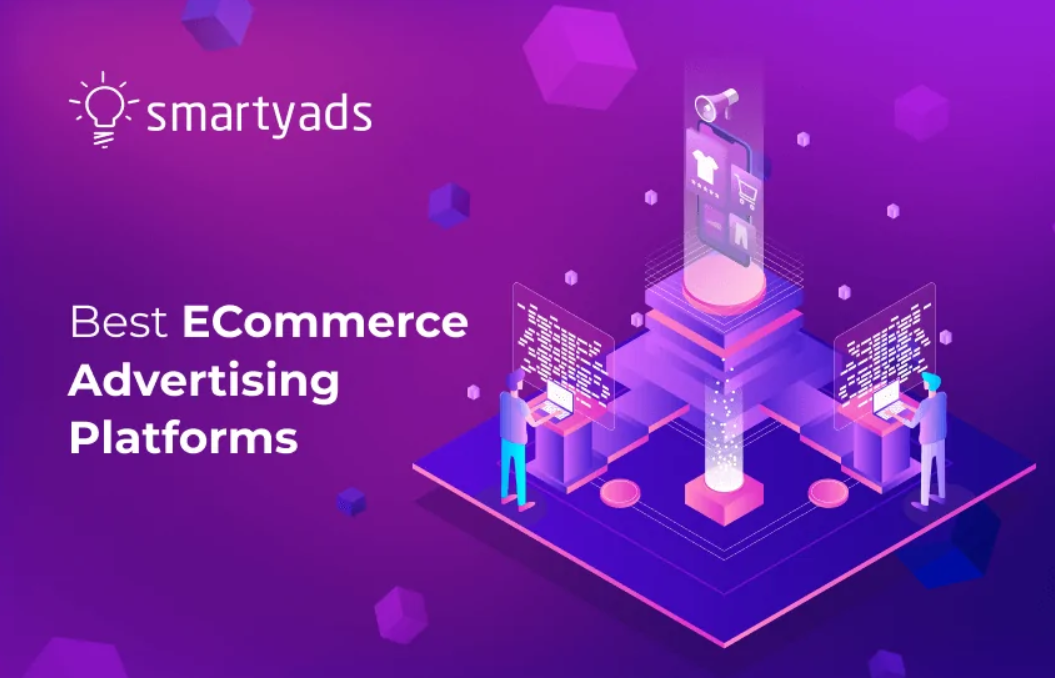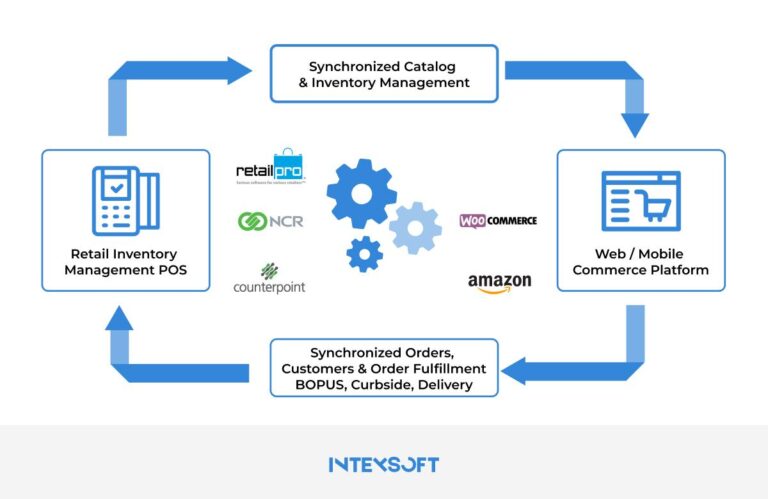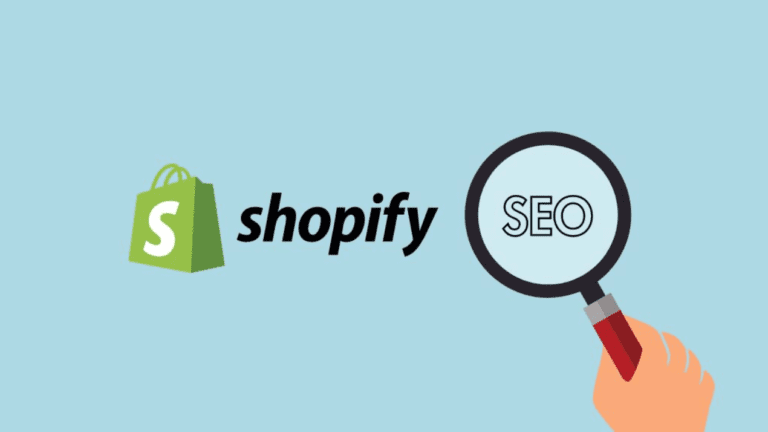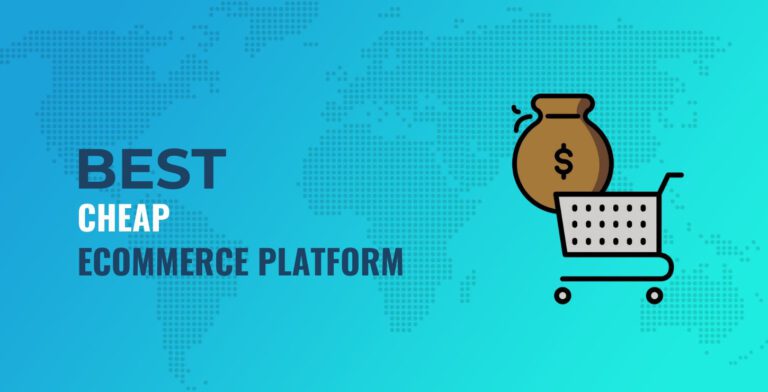Ecommerce Advertising Platforms: Maximize Your Sales Effectively
Ecommerce advertising platforms help businesses promote products online and reach targeted audiences effectively. These platforms offer various tools to boost sales and visibility.
Ecommerce advertising platforms have revolutionized how businesses market their products. They provide cost-effective, targeted advertising solutions that maximize ROI. Platforms like Google Ads, Facebook Ads, and Amazon Advertising enable businesses to reach specific demographics, track performance, and adjust strategies in real-time.
This precision ensures that ads reach the right audience, increasing the likelihood of conversions. With advanced analytics and optimization tools, these platforms help businesses make data-driven decisions. Utilizing ecommerce advertising platforms is essential for any business aiming to thrive in the competitive online marketplace. Understanding their features and benefits can significantly enhance your digital marketing efforts.
Introduction To Ecommerce Advertising
Ecommerce advertising helps online stores reach their audience. It drives sales and brand awareness. With the rise of online shopping, advertising has become crucial.
Importance Of Advertising
Advertising is essential for any ecommerce business. It attracts potential customers and keeps them engaged. Here are some key reasons why advertising is important:
- Increases Visibility: Ads make your store visible to a larger audience.
- Drives Traffic: Effective ads bring more visitors to your site.
- Boosts Sales: Ads help convert visitors into buyers.
- Builds Brand Loyalty: Consistent advertising helps build trust.
Growth Of Ecommerce
The ecommerce industry has grown rapidly in recent years. This growth has been fueled by several factors:
| Factor | Description |
|---|---|
| Technological Advances | Improved technology has made online shopping easier. |
| Mobile Shopping | More people shop using their smartphones. |
| Global Reach | Online stores can reach customers worldwide. |
| Convenience | Shopping online is often more convenient than in-store shopping. |
The growth of ecommerce has led to more competition. This makes advertising even more important. Standing out in a crowded market is key.
Choosing The Right Platform
Picking the right eCommerce advertising platform can boost your sales. The right platform will help reach your target audience efficiently. It will also provide valuable insights and analytics.
Factors To Consider
There are several factors to consider when choosing an eCommerce advertising platform:
- Budget: Determine how much you can spend on advertising.
- Target Audience: Identify who you want to reach.
- Ad Formats: Look for platforms that offer various ad formats.
- Analytics: Ensure the platform provides detailed analytics.
- User Experience: Consider how easy the platform is to use.
Platform Comparisons
Let’s compare some popular eCommerce advertising platforms:
| Platform | Budget | Target Audience | Ad Formats | Analytics | User Experience |
|---|---|---|---|---|---|
| Google Ads | Flexible | Global | Text, Display, Video | Detailed | Moderate |
| Facebook Ads | Flexible | Social Media Users | Image, Video, Carousel | Detailed | Easy |
| Amazon Ads | Medium to High | Online Shoppers | Sponsored Products, Brands | Detailed | Moderate |
Choosing the right platform involves understanding these factors. Aligning them with your business needs is crucial.
Google Ads For Ecommerce
Google Ads is a powerful tool for ecommerce businesses. It helps reach potential customers searching for products. With Google Ads, you can target specific audiences effectively. This increases your chances of making a sale. Let’s explore the benefits and how to set up your campaign.
Benefits Of Google Ads
Google Ads offers several benefits for ecommerce businesses. These advantages can help boost your sales and brand visibility.
- Targeted Advertising: Reach users searching for your products.
- Cost-Effective: Only pay when someone clicks on your ad.
- Measurable Results: Track your campaign performance easily.
- Flexibility: Adjust your budget and targeting as needed.
- High Visibility: Appear at the top of search results.
Setting Up Your Campaign
Setting up your Google Ads campaign is simple. Follow these steps to get started.
- Create a Google Ads Account: Sign up on the Google Ads website.
- Define Your Budget: Set a daily or monthly budget for your ads.
- Choose Your Keywords: Select relevant keywords for your products.
- Write Your Ad Copy: Craft compelling text to attract clicks.
- Select Your Audience: Target specific demographics and locations.
- Launch Your Campaign: Review and start your ads.
Google Ads can transform your ecommerce business. Use its features to reach the right audience. This will boost your sales and grow your brand.
Facebook And Instagram Ads
Facebook and Instagram Ads are powerful tools for ecommerce businesses. They offer robust advertising options to reach potential customers and drive sales. These platforms provide various features tailored to different business needs.
Targeting Options
One of the strongest features of Facebook and Instagram Ads is their targeting options. You can target users based on:
- Demographics (age, gender, location)
- Interests and hobbies
- Online behaviors and purchasing habits
These platforms also allow for custom audiences. You can upload your customer list and target them directly. This helps in reaching people who already know your brand. Another feature is lookalike audiences. This allows you to reach new people similar to your existing customers.
Ad Formats
Facebook and Instagram support a variety of ad formats to suit different marketing goals. Here are some popular ones:
| Ad Format | Description |
|---|---|
| Image Ads | A single image with a call-to-action |
| Video Ads | Engaging videos to showcase products |
| Carousel Ads | Multiple images or videos in a single ad |
| Slideshow Ads | Looping videos made from images |
| Collection Ads | Showcase products in a grid layout |
Choosing the right ad format is essential. It helps in delivering your message effectively and engaging your audience.
Amazon Advertising
Amazon Advertising offers diverse options for businesses to reach potential customers. These options help brands increase visibility and drive sales on Amazon’s platform.
Sponsored Products
Sponsored Products are cost-per-click ads that promote individual product listings. They appear in search results and on product detail pages.
This type of ad helps increase product visibility. It targets keywords or products similar to yours.
- Easy to set up and manage
- Cost-effective advertising solution
- Improves discoverability of products
Sponsored Product ads are ideal for promoting best-sellers. They also help in clearing out inventory.
Sponsored Brands
Sponsored Brands are ads that feature your brand logo, a custom headline, and multiple products. They appear in search results and help build brand awareness.
This type of ad is perfect for showcasing your brand. It highlights a collection of related products.
| Feature | Description |
|---|---|
| Custom Headline | Attracts attention with a unique message |
| Brand Logo | Increases brand recognition |
| Multiple Products | Showcases a variety of products |
Sponsored brand ads help in creating a strong brand presence. They drive traffic to a custom landing page or your Amazon Store.
Pinterest Ads For Ecommerce
Pinterest is a powerful platform for ecommerce businesses. It’s a visual discovery engine that drives traffic and sales. With Pinterest Ads, ecommerce brands can reach their target audience effectively.
Visual Appeal
Pinterest is all about visuals. High-quality images grab attention. Make your ads stand out with beautiful and engaging visuals. Use bright colors and clear text. Show your products in real-life settings.
Visual appeal is crucial for ecommerce. Users are more likely to click on visually appealing ads. Focus on creating eye-catching images. Use professional photography and design.
Ad Types
Pinterest offers various ad types for ecommerce businesses. Each type serves a different purpose. Here is a table to explain the different ad types:
| Ad Type | Description |
|---|---|
| Promoted Pins | Boosts visibility of standard Pins to reach more people. |
| Promoted Video Pins | Engages users with video content in their feeds. |
| Promoted Carousels | Showcases multiple images in a single ad unit. |
| Shopping Ads | Directly promotes products with pricing and availability. |
| Collection Ads | Combines a large hero image with smaller images for a catalog feel. |
Using the right ad type can increase engagement. Experiment with different formats. Find what resonates most with your audience.
Pinterest Ads can help ecommerce businesses grow. Focus on visual appeal and choose the right ad types.
Optimizing Ad Performance
Optimizing ad performance is crucial for ecommerce success. This ensures your ads reach the right audience effectively. Let’s explore two key strategies: A/B Testing and Analyzing Metrics.
A/b Testing
A/B Testing helps you compare two versions of an ad. This identifies which performs better. Create two versions with slight differences. Changes could be in:
- Headlines
- Images
- Call-to-Action
- Ad Copy
Run both versions simultaneously. Track which version gets better results. This helps optimize future ads.
Analyzing Metrics
Analyzing Metrics is vital. It provides insights into ad performance. Key metrics to track include:
| Metric | Importance |
|---|---|
| Click-Through Rate (CTR) | Measures ad engagement |
| Conversion Rate | Tracks successful actions |
| Cost Per Click (CPC) | Evaluate ad spend efficiency |
| Return on Ad Spend (ROAS) | Calculates revenue from ads |
Use these metrics to assess and adjust your strategy. This ensures you get the most from your ad spend.

Credit: www.spiceworks.com
Budgeting And Roi
Effective budgeting and ROI are critical for ecommerce advertising success. Proper planning ensures optimal resource allocation and better returns. This section will cover setting a budget and measuring ROI for your advertising campaigns.
Setting A Budget
Setting a budget is the first step in managing advertising costs. Determine how much you can afford to spend on advertising without affecting other operations. Consider the following factors:
- Monthly Revenue: Allocate a percentage of your revenue to advertising.
- Ad Platform Costs: Different platforms have varied costs per click or impression.
- Campaign Goals: Define what you want to achieve with your ads.
A typical budget allocation might look like this:
| Monthly Revenue | Advertising Budget (5-10%) |
|---|---|
| $10,000 | $500 – $1,000 |
| $50,000 | $2,500 – $5,000 |
Use tools to track your spending and adjust as needed. Always leave room for flexibility based on performance.
Measuring Roi
Measuring ROI helps determine the effectiveness of your advertising campaigns. Use the following formula to calculate ROI:
ROI = (Net Profit / Cost of Investment) x 100
Focus on these key metrics:
- Conversion Rate: The percentage of users who complete a desired action.
- Customer Acquisition Cost (CAC): The cost of acquiring one customer.
- Lifetime Value (LTV): The total revenue from a customer over time.
Track these metrics using analytics tools. Adjust your campaigns based on the data to improve performance.
For example, if your net profit is $1,000 and your advertising cost is $200, the ROI is:
ROI = ($1,000 / $200) x 100 = 500%
Regularly review these metrics to optimize your budget and maximize ROI. Consistent tracking ensures your campaigns remain cost-effective and profitable.
Future Trends In Ecommerce Advertising
The future of ecommerce advertising is evolving rapidly. New technologies and strategies are shaping the landscape. Businesses need to stay ahead to remain competitive. Let’s explore some key trends in this dynamic field.
Ai And Automation
Artificial intelligence (AI) and automation are revolutionizing ecommerce advertising. AI helps in analyzing vast amounts of data quickly. This enables better decision-making and targeting. Automation streamlines ad campaigns, saving time and resources.
Here are some ways AI and automation are impacting ecommerce advertising:
- Real-time data analysis: AI processes data faster than humans. It provides insights in real time.
- Predictive analytics: AI predicts future trends based on past data. This helps in planning effective campaigns.
- Automated bidding: Automation adjusts bids for ads automatically. This ensures optimal spending.
- Chatbots: AI-powered chatbots engage with customers 24/7. They improve customer service and sales.
Personalized Ads
Personalized ads are becoming more important in ecommerce. Customers expect tailored experiences. Personalization increases engagement and conversion rates.
Key aspects of personalized ads include:
- Customer segmentation: Grouping customers based on behavior and preferences.
- Dynamic content: Changing ad content in real-time based on user data.
- Retargeting: Showing ads to users who have interacted with your site.
- Product recommendations: Suggesting products based on past purchases.
Personalized ads make customers feel valued. This leads to higher loyalty and repeat purchases.
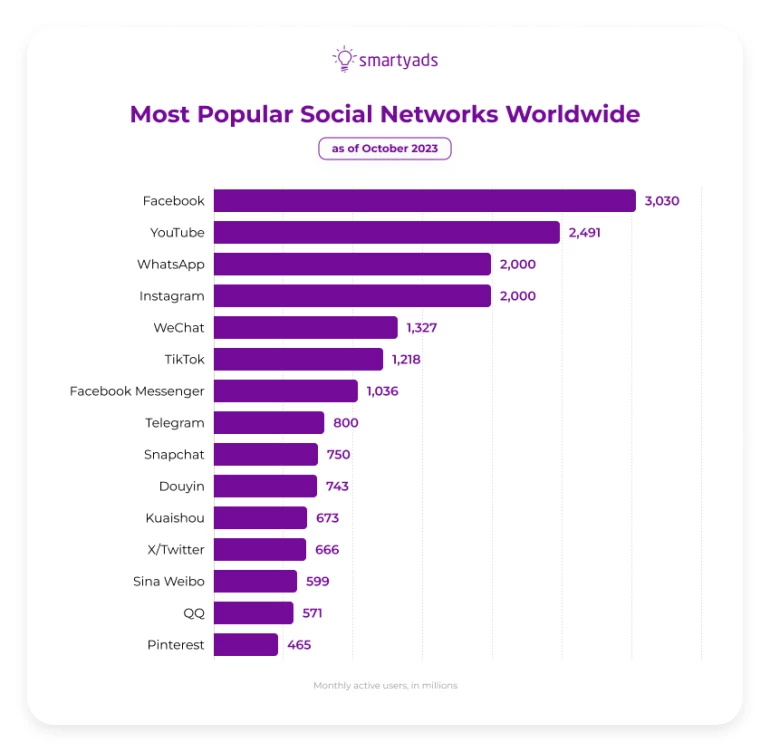
Credit: smartyads.com
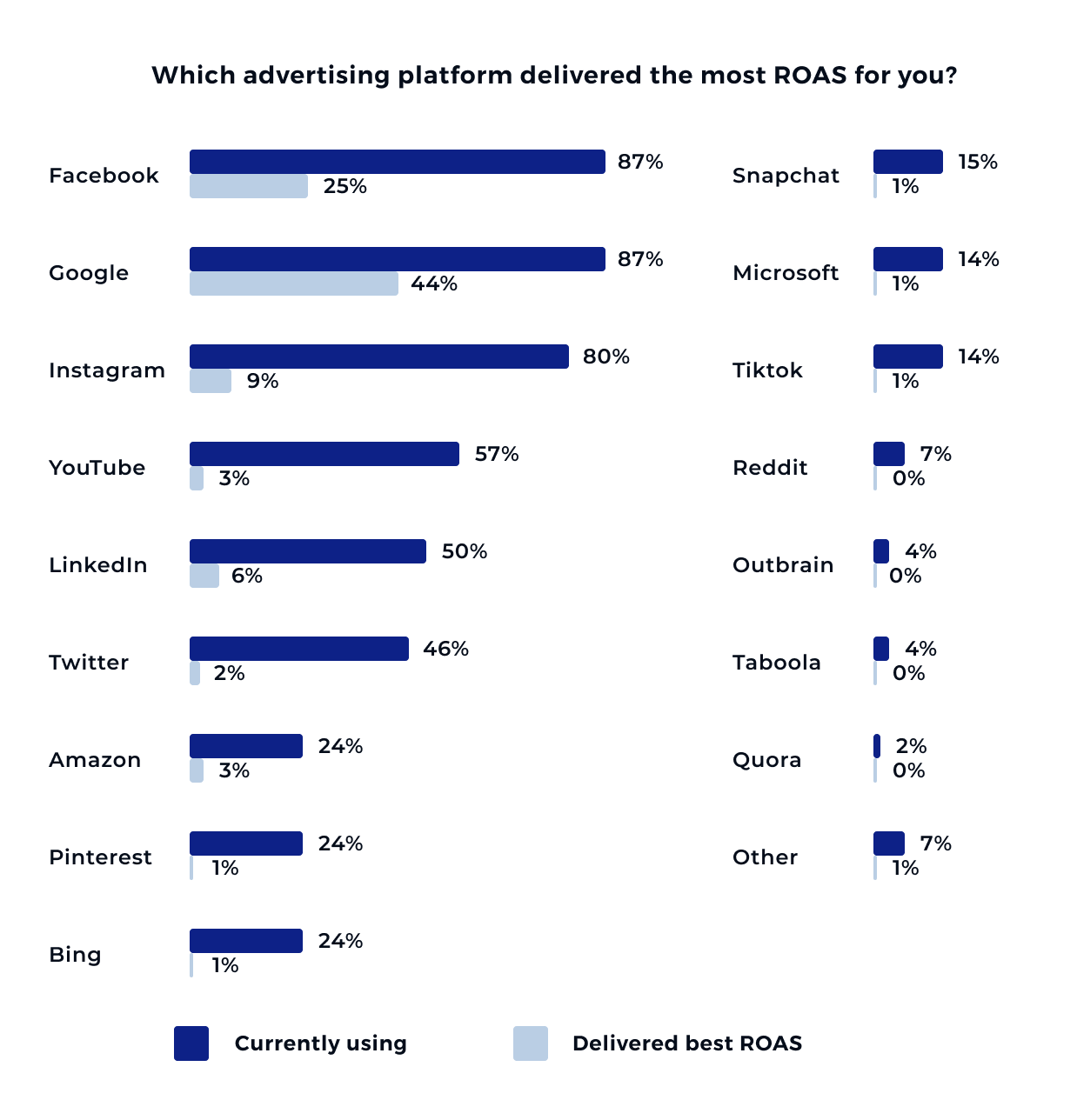
Credit: instapage.com
Frequently Asked Questions
What Are The Top Ecommerce Advertising Platforms?
The top ecommerce advertising platforms include Google Ads, Facebook Ads, Amazon Advertising, and Instagram Ads. These platforms offer targeted advertising, helping businesses reach potential customers effectively.
How Does Google Ads Benefit Ecommerce?
Google Ads benefits ecommerce by providing targeted advertising, increasing visibility, and driving traffic to online stores. It offers various ad formats suitable for different business needs.
Why Use Facebook Ads For Ecommerce?
Facebook Ads are effective for ecommerce because they allow precise audience targeting. They also offer diverse ad formats and retargeting options to boost sales.
What Is Unique About Amazon Advertising?
Amazon Advertising allows sellers to promote products directly on the Amazon platform. It offers sponsored products, brand ads, and display ads, enhancing product visibility.
Conclusion
Choosing the right ecommerce advertising platform can boost your sales and grow your business. Evaluate each platform’s strengths and align them with your goals. Test different strategies to find what works best. Stay informed about trends and adapt your approach.
Success in ecommerce advertising comes from continuous learning and optimization.
